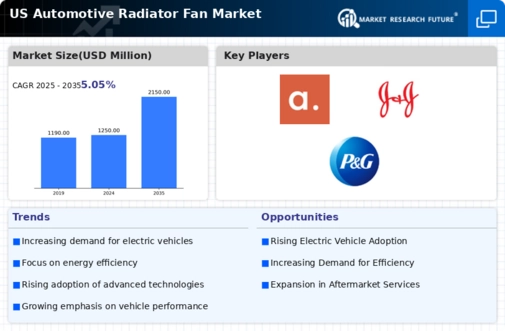The US Automotive Radiator Fan Market is characterized by a dynamic landscape where various companies compete to capture market share through product innovation, strategic partnerships, and superior customer service. As vehicles evolve with technological advancements, the demand for efficient thermal management systems, including radiator fans, continues to rise. Companies in this sector are focused on improving performance and reliability while also considering factors such as fuel efficiency and environmental compliance.
The competitive dynamics are shaped by the presence of established players, emerging companies, and a steady influx of innovative products tailored to meet the specific needs of automotive manufacturers and aftermarket customers.Aisin Seiki, a notable player in the US Automotive Radiator Fan Market, has a strong reputation for delivering high-quality thermal systems and components. The company has established itself as a reliable partner for numerous automakers in the United States, leveraging its extensive research and development capabilities.
Aisin Seiki's strengths lie in its robust engineering expertise and commitment to innovation, which have enabled the company to produce advanced radiator fans that meet stringent performance standards. Their focus on enhancing energy efficiency and reducing weight contributes to the overall performance of vehicles, further solidifying Aisin Seiki’s presence in this competitive market. Their ability to adapt to shifting consumer demands and technological advancements allows them to maintain a significant market position.Gates Corporation holds a prominent position in the US Automotive Radiator Fan Market, primarily recognized for its comprehensive range of automotive parts and systems.
Their key offerings include high-performance electric fans and associated components, designed to optimize engine cooling while enhancing overall vehicle efficiency. Gates Corporation's strengths stem from its innovative approach to product development, coupled with strong relationships with major automotive manufacturers and suppliers. The company actively engages in mergers and acquisitions to expand its portfolio and enhance market presence. This strategic move allows Gates Corporation to introduce new technologies and improve product offerings tailored to the specific needs of the US market, thereby reinforcing its competitive edge in the industry.
Their commitment to quality and reliability, alongside an expansive distribution network, solidifies their status as a leader in the automotive thermal management segment within the United States.














Leave a Comment